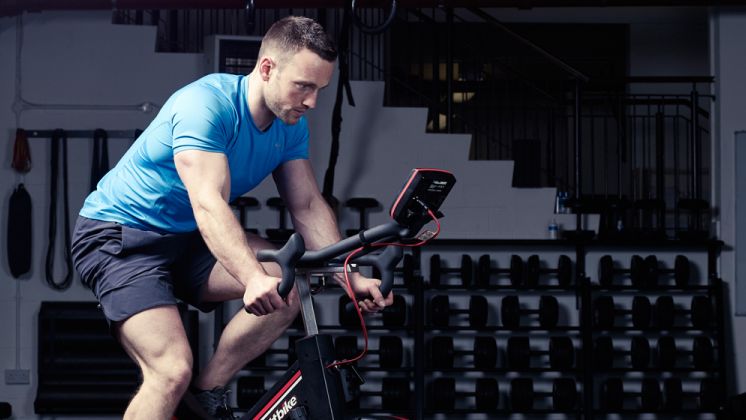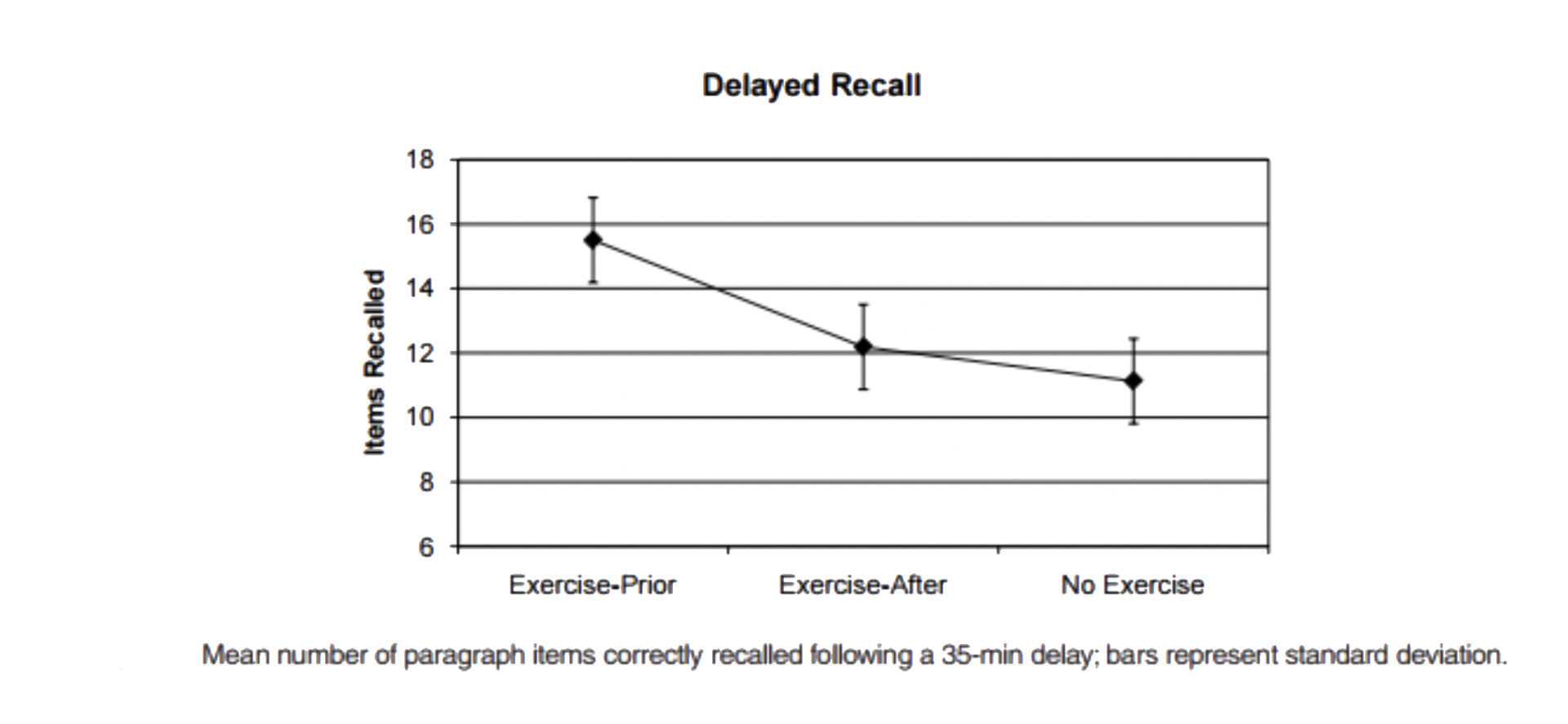Experiment: Exercise and memory
 The following is a sample Paper 3 that looks at an experimental study.
The following is a sample Paper 3 that looks at an experimental study.
Below you will find the stimulus piece, followed by the static questions.
A copy of the mock paper is included to give students as an in-class assessment.
Potential answers are included in the hidden boxes below.
Stimulus Piece
Labban and Etnier (2011) carried out a study to determine the effects of exercise on long-term memory consolidation. They wanted to see if moderate aerobic exercise could have an effect on one’s ability to recall a piece of prose.
The study consisted of forty-eight young adults (15 men, 33 women; mean age = 22.02 years) who responded to ads on the University of North Carolina–Greensboro campus. All provided informed consent to participate in the study and filled out a questionnaire about their health to guarantee that they were healthy.
The participants were randomly assigned to one of three groups: the exercise-prior group, the exercise-after group, or the control group. Groups were matched by gender to ensure the breakdown was equivalent across groups (5 men, 11 women).
In two of the conditions, the participants were asked to perform moderate-intensity exercise on a stationary bicycle. There was a five-minute warm-up period where the bike’s resistance level was 0.5 kiloponds (kps); the participants then continued for 30 minutes at 1.0 kps. Exercise concluded with a 5-min cool-down period. Water was provided to the participants throughout the session. Heart-rate was measured during the exercise routine to make sure that it was within an optimal zone to show arousal, but not over arousal.
Each participant in the exercise-prior group began by completing the exercise, immediately after which two paragraphs were read to the participant. The researcher read Story A and then had the participant immediately recount the story as exactly as possible. The researcher then read Story B and asked the participant to retell the story as exactly as possible. To reduce rehearsal, participants then completed the Stroop Task. Participants then rested quietly for 30 minutes before being asked to recall the two paragraphs again.
The exercise-after group differed from the exercise-prior group only in that they rested quietly before being read the paragraphs and completed the exercise immediately after their first attempt at recall. After the cool down, participants were then asked to recall the paragraphs again. Participants in the control group did not exercise at all but rested quietly before and after listening to the paragraph being read.
The graph below shows the results for each group.

Statistical analysis found that only the exercise-prior group’s long-term recall performance was significantly better than the control group, p < .05. The difference in recall between the exercise-prior and exercise-after groups did not reach statistical significance (p = .09).
The researchers concluded that participation in moderately intense aerobic exercise prior to exposure and consolidation may result in improved performance on a delayed recall task when compared to controls.
References
Labban, J.D., & Etnier, J.L. (2011). Effects of acute exercise on long-term memory. Research Quarterly for Exercise and Sport, 82(4), 712-721.
Questions
1a. Identify the method used and outline two characteristics of the method.
1b. Describe the sampling method used in the study.
1c. Suggest an alternative or additional research method giving one reason for your choice.
2. Describe the ethical considerations that were applied in the study and explain if further ethical considerations could be applied.
The researchers obtained informed consent from the participants. This is important since they will be asked to carry out some moderate intensity aerobic exercise. They would also need to be told that they have the right to withdraw at any time. If they felt that they were overly exhausted, unwell or were simply bored, they have the right to pull out of the study. The researchers also attempted to control for undue stress or harm. The participants were asked to fill in a health survey to make sure that they were fit enough for the experiment. In addition, the participants heart rates were monitored throughout the experiment. If anything was problematic, the researchers should stop the study. All data that is obtained must remain anonymous. This can be done by coding the participants so that names are not used in the study. Although there is no outright deception in the study, it is not clear whether the participants understood the hypothesis that was being tested. This could be done to avoid expectancy effect, where the participants try their best to satisfy the goals of the research. Finally, the participants would have to be debriefed as to the true aim of the study as well as the findings. They would also have the right to withdraw their data at that point in the study.
3. Discuss how the researcher could avoid bias in this study.
The researchers could avoid bias in several ways. The most basic way is to have peers review the study before publication. If there are any biases that may influence the findings of the study, peers should be able to point it out. As the study is quantitative in nature, the conclusions are drawn based on statistical analysis. In this case, the statistics show that one condition is significant compared to the control - but the other is not. It is important that the researchers do not attempt to present their conclusions as supporting the hypothesis, and that they actually discuss that the hypothesis is only partially supported. As part of reflexivity, the researchers may want to reflect on why this may be the case, but it is important that this is discussed within the report.
The researchers may also want to use a blind control. For example, they would have the experiment run by assistants who are not clear of the goals of the experiment. As they are evaluating how exactly the participants recall the text, it is important that they do not do this too subjectively. A blind control would mean that the researchers would assess the level of recall without knowing which group/condition the data is coming from. In the actual study, this was not done. Instead, they only counted recall if it is was 100% verbatim. Any variation meant that it was thrown out. Although this lowers the level of bias, it may also mean that the results are skewed. This could also be avoided by having more than one researcher evaluate the level of recall in order to establish inter-rater reliability and to lower the chance that subjective biases influenced the evaluation.
This study also suffers from a sampling bias. Students are used - and this may bias the findings as they are used to memorizing. In addition, it was a volunteer sample, which means that only those that would be interested in exercising would take part in the study. A random sample from the population would lower the level of sampling bias.

 IB Docs (2) Team
IB Docs (2) Team
